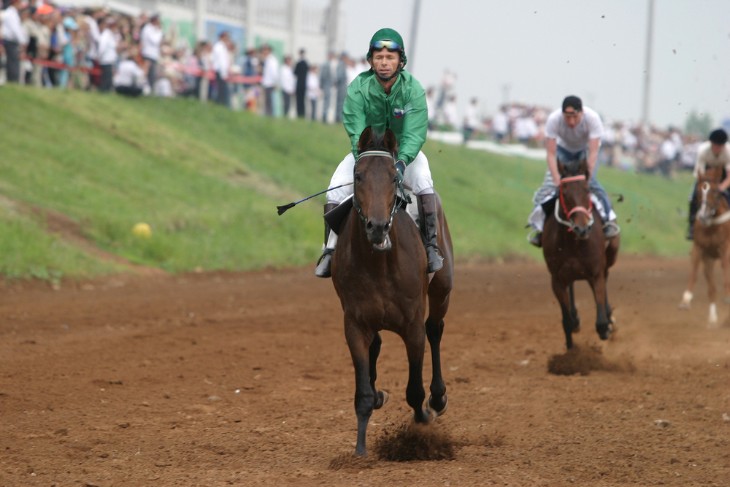- Key Open Handicap Races Around the World
- Training Techniques for Competing Horses
- The Economic Aspects of Open Handicap Racing
- Breeding Strategies for Open Handicap Contenders
- The Economic Aspects of Open Handicap Racing
- The Role of Regulations and Governance in Open Handicap Races
- Fan Engagement and the Cultural Significance of Open Handicap Races
- Conclusion
The handicap system in horse racing is a critical component that ensures fair competition. Essentially, it involves assigning weights to horses based on their past performances, with the goal of equalising their chances of winning. The handicapper, a key figure in this process, analyses horses' race records, considering factors such as race distances, the competition they faced, and their finishing positions. This comprehensive analysis results in a handicap rating, reflecting the horse's ability.
The implementation of handicap ratings varies between countries, but the underlying principle remains consistent: to balance the field and create exciting, competitive races. The following points highlight the key aspects of handicap systems:
- Performance Analysis: Horses are assessed based on their previous races, considering factors such as speed, endurance, and the quality of the competition.
- Weight Allocation: Based on their handicap rating, horses are assigned weights. Higher-rated horses carry more weight, while lower-rated ones carry less.
- Regular Updates: Handicap ratings are not static. They are regularly updated to reflect the horse's current form, ensuring ongoing fairness in racing.
This system not only maintains a level playing field but also allows for the emergence of dark horses, adding an element of surprise and excitement to the sport. The handicap system's intricacy and fairness contribute significantly to the sport's appeal, drawing in participants and spectators alike.
Key Open Handicap Races Around the World
The world of Open Handicap racing boasts several iconic events, each with its own history and prestige. One of the most renowned races is the Melbourne Cup in Australia, often referred to as the race that stops a nation. This event, held annually at Flemington Racecourse, attracts a global audience and features horses from around the world. The Melbourne Cup epitomises the spirit of open handicap racing, where horses of varying abilities compete on a level playing field, making it a true test of skill and strategy.
Another significant race in the open handicap calendar is the Grand National in the United Kingdom. Held at Aintree Racecourse near Liverpool, the Grand National is famous for its challenging course, featuring larger fences and longer distances than most other races. This event not only tests the endurance and agility of the horses but also the skill and experience of the jockeys. These races, along with others like the Dubai World Cup and the Breeders' Cup Classic in the United States, highlight the global appeal and diversity of open handicap races, drawing participants and spectators from various parts of the world.
Training Techniques for Competing Horses
In Open Handicap racing, the training of competing horses is a meticulous and sophisticated process. Trainers must develop a regime that enhances the horse's speed, stamina, and agility, tailored to the specific demands of handicap racing. Key components of this training include:
- Conditioning and Fitness: Regular exercise routines are designed to build muscle strength and cardiovascular endurance. This might include track work, swimming, and treadmill exercises.
- Diet and Nutrition: A balanced diet is crucial for maintaining the horse's peak physical condition. Nutritional plans often include high-energy feeds, supplements, and adequate hydration strategies.
- Mental Training: Mental conditioning is as important as physical training. Horses are trained to handle the high-stress environment of racing, including the presence of large crowds and the starting gates.
Each horse's training is adjusted based on its individual characteristics and the specific challenges of upcoming races. Trainers constantly monitor the horse's progress, making adjustments to ensure the horse peaks at the right time for major races.

The Economic Aspects of Open Handicap Racing
The economic impact of Open Handicap racing is substantial, influencing various sectors of the horse racing industry and beyond. Some key economic aspects include:
- Betting and Gambling Revenue: Open handicap races attract significant betting activity, contributing to the gambling industry's revenue. The unpredictability of these races makes them particularly appealing to bettors.
- Breeding and Sales: Success in open handicap races can enhance a horse's breeding value. High-performing horses often command premium prices at sales and as breeding stock.
- Sponsorships and Media Rights: These races draw considerable interest from sponsors and media outlets, generating significant revenue through advertising, sponsorships, and broadcasting rights.
The financial stakes in open handicap racing are high, with owners, trainers, and jockeys all vying for a share of the lucrative prize money and associated earnings. This economic aspect drives competition and innovation in the sport, attracting investment and attention from around the globe.
Breeding Strategies for Open Handicap Contenders
Breeding plays a critical role in producing successful contenders for Open Handicap races. The goal is to produce horses that possess a blend of speed, stamina, and agility, suited to the diverse challenges of handicap racing. Breeders often look at a range of factors when planning matings, including:
- Pedigree Analysis: This involves examining the bloodlines of potential breeding pairs to identify desirable traits such as speed, endurance, and temperament. Successful racehorses often come from a lineage of other successful horses, suggesting a genetic component to their abilities.
- Physical and Temperamental Traits: Breeders also consider the physical attributes and behavioural characteristics of the horses. For example, a horse with a calm demeanor might be better suited to the high-pressure environment of racing.
Breeding for open handicap races is a long-term, strategic endeavour, often involving significant investment. The aim is to produce horses that not only excel in their early years but also have the longevity and adaptability to compete successfully over time. This aspect of the sport underscores the deep connection between the history and future of horse racing, as each generation of horses carries the legacy of its predecessors into new arenas of competition.
The Economic Aspects of Open Handicap Racing
The economic impact of Open Handicap racing is extensive, influencing various sectors within and outside the horse racing industry. The following points highlight some of the key economic aspects:
- Betting and Wagering: Open handicap races attract substantial betting activity, contributing significantly to the gambling industry. The unpredictability of these races often results in larger betting pools and potentially higher payouts.
- Breeding and Horse Sales: Successful horses in open handicap races can command high prices in sales and breeding fees. The potential for a horse to excel in these races can increase its value exponentially.
- Sponsorship and Media Rights: These events attract significant interest from sponsors and media outlets. Sponsorships, advertising, and broadcasting rights generate considerable revenue, contributing to the economic vitality of the sport.
The financial dynamics of open handicap racing not only underpin the sport but also create opportunities for employment and business within the equine industry. From trainers and jockeys to breeders and stable staff, the economic ripple effect of these races is substantial.

The Role of Regulations and Governance in Open Handicap Races
Regulations and governance play a crucial role in maintaining the integrity and fairness of Open Handicap races. The regulatory bodies governing these races are responsible for establishing and enforcing rules that ensure safety, fairness, and competitiveness. These regulations cover a wide range of aspects, from determining the conditions of races to overseeing the handicapping process. For instance, strict guidelines are set for the types of weights horses carry, the qualifications of jockeys, and the standards for racecourse facilities.
Additionally, governance in open handicap racing involves measures to prevent unethical practices such as doping and race fixing. Regulatory authorities employ rigorous testing methods and surveillance to detect any violations, imposing penalties on those who breach the rules. This level of governance is vital for preserving the sport's reputation and ensuring that the principle of fair competition, which is at the heart of handicap racing, is upheld.
Fan Engagement and the Cultural Significance of Open Handicap Races
Open Handicap races have a significant cultural and social impact, with fan engagement playing a pivotal role. The following points highlight the aspects of fan engagement and cultural significance:
- Global Fan Base: Open handicap races attract fans from around the world, fostering a diverse and passionate community. The excitement and unpredictability of these races appeal to a wide audience, transcending geographical and cultural boundaries.
- Cultural Events and Traditions: Many open handicap races have become cultural events in their own right, associated with traditions and festivities. For instance, the Melbourne Cup is a national event in Australia, with celebrations extending beyond the racecourse.
The cultural significance of open handicap races is also reflected in their impact on fashion, media, and entertainment. These events often feature in films, literature, and art, underscoring their influence on popular culture. This blend of sporting excellence and cultural prominence makes open handicap racing a unique and enduring aspect of the global sports landscape.
Conclusion
In conclusion, Open Handicap racing represents a unique and vibrant facet of the horse racing world. Its appeal lies in the level playing field it offers, allowing horses of varying abilities to compete under equal conditions. This diversity not only enhances the competitiveness of the races but also adds to their unpredictability and excitement. The sport's rich history, combined with its ongoing evolution driven by technological advancements and stringent governance, ensures its enduring popularity and relevance.
For more information:








